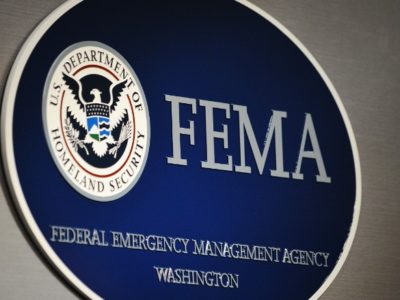Temporary Takings and the Adaptation Dilemma
Current law penalizes adaptation measures because of the risk of takings liability.
Is it unconstitutional for the government to build a levee that reduces the risk of urban flooding but diverts the water to nearby farmlands? The answer could be yes, unless the government pays for flood easements on the rural lands. But if the government doesn’t build the levee, it faces no liability from the urban landowners. That’s the adaptation dilemma: preparing for climate disaster is legally disfavored.
The issue is created by a 2012 Supreme Court. Although temporary flooding was not previously considered to be a taking, the Court reversed its position on that issue in Arkansas Game & Fish Comm’n v. United States, in which the state sought compensation for the temporary flooding on a game management area due to a dam. The Court emphasized, however, that not all flooding caused by government flooding would constitute a taking. But the Court’s multi-factor text makes it difficult for governments to know when they will be exposed to liability.
To begin with, the duration and frequency of flooding must be considered in determining the existence of a taking:
“When regulation or temporary physical invasion by government interferes with private property, our decisions recognize, time is indeed a factor in determining the existence vel non of a compensable taking. See Loretto (temporary physical invasions should be assessed by case-specific factual inquiry); Tahoe–Sierra (duration of regulatory restriction is a factor for court to consider); National Bd. of YMCA v. United States, (‘temporary, unplanned occupation’ of building by troops under exigent circumstances is not a taking).”
Other factors — including the government’s degree of responsibility, the landowner’s expectations, and the severity of flooding — might also be relevant to the existence of a taking:
“Also relevant to the takings inquiry is the degree to which the invasion is intended or is the foreseeable result of authorized government action. So, too, are the character of the land at issue and the owner’s ‘reasonable investment-backed expectations’ regarding the land’s use. For example, the Management Area [the land involved in the case] lies in a floodplain below a dam, and had experienced flooding in the past. But the trial court found the Area had not been exposed to flooding comparable to the 1990’s accumulations in any other time span either prior to or after the construction of the Dam. Severity of the interference figures in the calculus as well.”
In short, while the Court made it clear that temporary flooding is a potential taking, it left the lower courts to apply a multi-factor test to determine whether a taking existed.
The Supreme Court’s balancing test has created confusion in the lower courts, but it’s plain that at least some flooding caused by government projects will be considered takings. On the other hand, suppose that the government doesn’t build the levees. Then it faces no liability, because an affirmative action – not simply inaction – is required to find a taking. The government has no affirmative constitutional duty to prevent flooding. So leaving the danger unaddressed is the safest choice legally.
The problem is not limited to levees. The government also risks liability if it strengthens an existing dam to prevent flooding, because in heavy rains additional land behind the dam could be flooded. If it uses small fires to clear out underbrush and reduce fuel that could enable a huge fire, it could be liable if the small fire gets out of control – but the government wouldn’t have any liability if it ignored the risk and allowed the big fire to happen.
The current situation is a problem for two reasons. The first is the adaptation dilemma. By imposing a litigation risk on top of the construction cost of the sea wall, it makes adaptation just that much more difficult and expensive. And second, because the contours of the Supreme Court’s balancing test are so unclear, it also makes it harder for project designers to anticipate just what will get them in trouble legally.
I don’t see any prospect that the Supreme Court will give up on the idea of temporary takings liability. It would be very helpful if the test were clarified so that government officials knew where they stood.
It would be even more helpful if the Court recognized that the government has to make hard choices in responding to the escalating disaster risks caused by climate change. There is a difference between a deliberate taking of property and awareness that a government action can create risks to other property. Not every foreseeable potential harm should be considered a taking.







Reader Comments